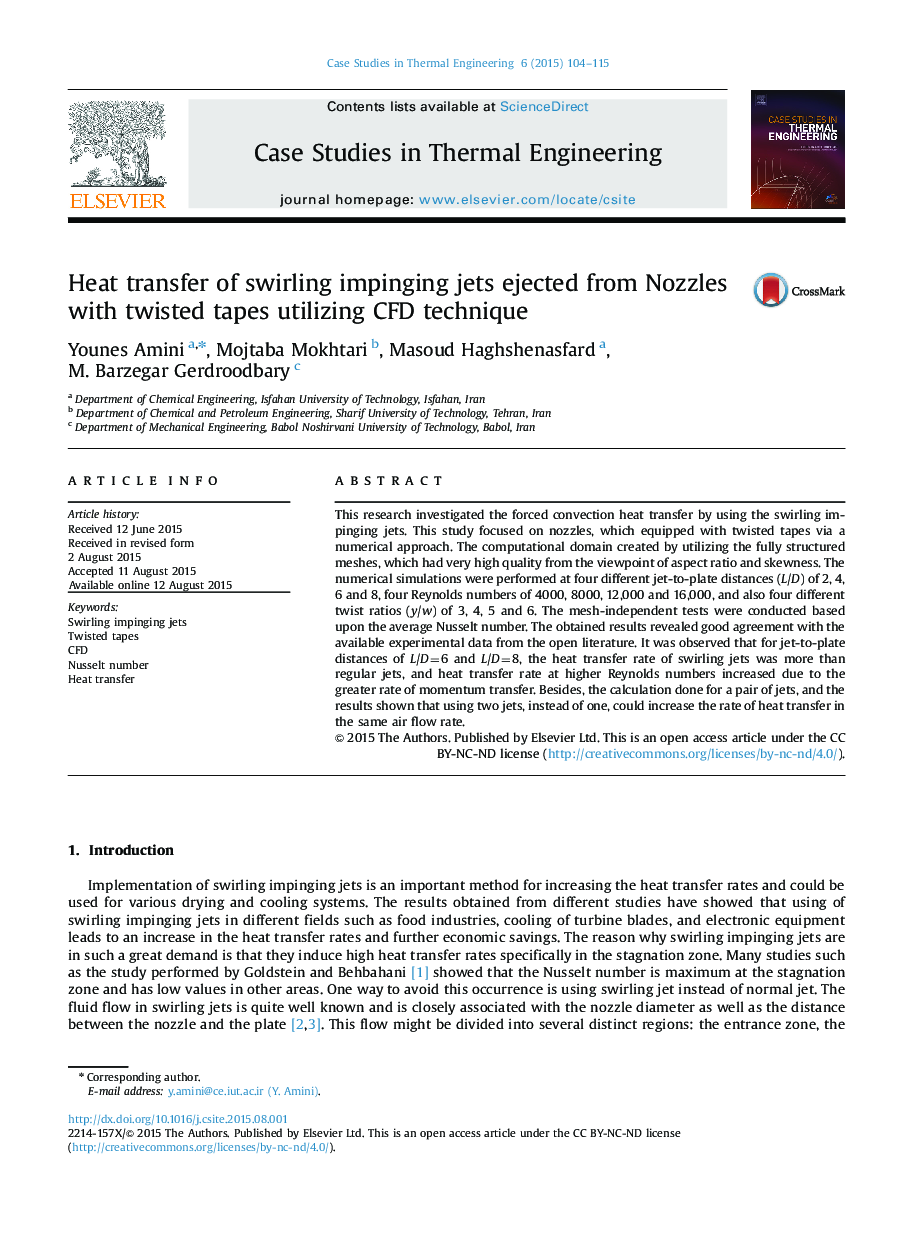| Article ID | Journal | Published Year | Pages | File Type |
|---|---|---|---|---|
| 757499 | Case Studies in Thermal Engineering | 2015 | 12 Pages |
This research investigated the forced convection heat transfer by using the swirling impinging jets. This study focused on nozzles, which equipped with twisted tapes via a numerical approach. The computational domain created by utilizing the fully structured meshes, which had very high quality from the viewpoint of aspect ratio and skewness. The numerical simulations were performed at four different jet-to-plate distances (L/D) of 2, 4, 6 and 8, four Reynolds numbers of 4000, 8000, 12,000 and 16,000, and also four different twist ratios (y/w) of 3, 4, 5 and 6. The mesh-independent tests were conducted based upon the average Nusselt number. The obtained results revealed good agreement with the available experimental data from the open literature. It was observed that for jet-to-plate distances of L/D=6 and L/D=8, the heat transfer rate of swirling jets was more than regular jets, and heat transfer rate at higher Reynolds numbers increased due to the greater rate of momentum transfer. Besides, the calculation done for a pair of jets, and the results shown that using two jets, instead of one, could increase the rate of heat transfer in the same air flow rate.
